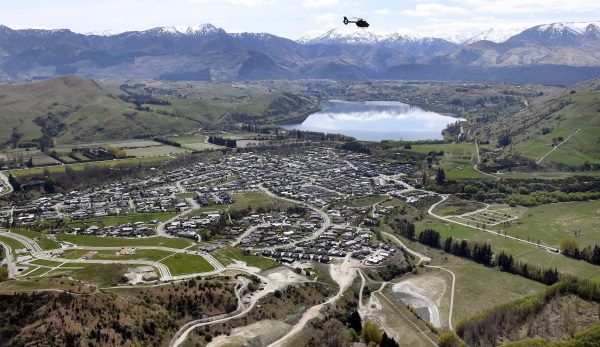‘Inclusionary housing’ likely to face legal challenges
Queenstown council’s chief executive says a recently-notified inclusionary housing plan change is ‘‘pushing the boat out, in a New Zealand context’’.
Public submissions on the change, which aims to introduce new rules to the district plan to help increase the amount of affordable housing across the district, opened this month and will close on November 24.
Under the controversial proposed change, there’d be different amounts collected by the council, for the Queenstown Lakes Community Housing Trust, depending on what development’s occurring.
But it would capture everyone building on vacant lots, not already subject to an affordable housing contribution.
Council boss Mike Theelen says that means areas like Hanley’s Farm, Jack’s Point and Shotover Country wouldn’t be captured.
However, in other areas, the landowner wishing to build would pay whatever’s less between 2% of the sales value of the additional house/s created, or a set rate of $150 per square metre of the net increase in residential floorspace.
Theelen expects that’ll only affect ‘‘the last 2% or 3% of the market’’.
‘‘The package is really designed to be picked up at the point of subdivision … not at the point of house-building.
‘‘Once it comes into law, it will apply to every dwelling built … across the district in the residential zone.’’
However, he says the proposed plan change is aimed at land developers, with council trying to claw back some money to support
the affordable end of the housing market.
‘‘I’m not sure what other mechanism would most effectively connect the activity of development with supporting a portion of that value to support affordable housing.’’
Theelen: ‘All options remain on the table’
He accepts, though, there’s a paradox in council adding costs to an already expensive housing market in an effort to make it affordable for others and is expecting the plan change will be challenged.

‘‘It is, in some people’s minds, a very controversial change.
‘‘It’s one that, in some respects, does test the boundaries of the RMA — can we use financial contributions to support, effectively, affordable housing outcomes?
‘‘Our position is yes, we can, but we acknowledge that is also likely to be tested.
‘‘In some respects we are pushing the boat out on this change, in a New Zealand context.’’
Theelen knows there are some parts of the industry ‘‘simply philosophically opposed’’ to the change, ‘‘and we expect to hear from those sectors’’.
Others will argue the council’s adding costs to what’s already an expensive exercise, but Theelen says prices will be set by the market.
‘‘While those costs that we impose influence it, they are not the ultimate determinant of what the market price is.’’
He stresses the plan change is still very much in draft form, and ‘‘all options remain on the table’’.
In particular, he expects the contentious ‘‘top-up charge’’ — a cost if a homeowner wanted to build an addition to their existing property — may come under heavy scrutiny.
‘‘That certainly raised some concerns and we would expect to see some submissions on that particular aspect of it … is that achieving a significant benefit, or is that simply adding levels of complexity or annoyance that aren’t justified by the imposition of that?’’
It’ll likely be early 2023, after submissions, further submissions and public hearings, before the plan change goes back to council for decisions.
At that point, elected members can either modify it, proceed or ‘‘kick it to touch’’, Theelen says.




